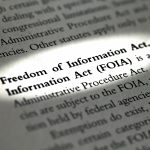Media Mea Culpas and Journalistic Transparency
Legal, Policy and First Amendment
Media organizations, from time to time, have commissioned outside investigators to examine their coverage of a news story to determine whether that reporting was ethical, reinforced the news outlet’s credibility and justified its actions.
But doing so can create unintended legal implications. One of the most prominent recent instances involves Rolling Stone magazine commissioning Columbia University’s Graduate School of Journalism to review its coverage of an alleged rape case at the University of Virginia. The story was widely debunked and later criticized for its inaccuracies. The magazine was subsequently sued for its story.
A review of related court cases by Journalism Professor Clay Calvert, director of the Marion B. Brechner First Amendment Project at the University of Florida College of Journalism and Communications, found that while the report was most likely intended to repair a damaged reputation, the findings were admitted into evidence during the trial in one libel case against the magazine and cited in the complaint of another which settled before trial. Calvert concludes that this use of third-party analysis blurs the line between journalism ethics and media law, creating confusion among news professionals.
Journalism ethics codes have historically served as a guide for appropriate behavior during the news gathering process, but are not legally binding. In some instances, expert testimony on the subject of journalism ethics and professional standards has been admissible, but not as evidence of actual malice in cases involving public-figure plaintiffs. Expert testimony by journalists about professional standards is more relevant in cases involving private-figure plaintiffs, who typically must prove negligence. But even these cases are not about journalistic malpractice. It’s not like medical malpractice where a physician can be impugned for going against medical ethics or the Hippocratic Oath.
As Calvert explains, when a third-party report examining the conduct of a journalist is brought into legal proceedings, the repercussions can be greater than intended. For example, not only can the report be used to prove fault, it might also influence the jury’s view regarding whether the story was false. Essentially, the opinion of a third-party can inform the facts of the case.
In the Rolling Stone case, a Virginia jury ruled against the magazine and the story’s reporter, Sabrina Rubin Erdely, in a defamation lawsuit. The jury awarded plaintiff Nicole Eramo, a Dean at the University of Virginia, $3 million, with the parties later reaching a confidential settlement. In another defamation lawsuit filed by the University of Virginia’s Phi Kappa Psi chapter, at whose house the rape allegedly occurred, also reached a settlement agreement for $1.65 million.
Calvert believes that third-party investigations intended to shed light on an organization’s journalistic ethical failings and restore trust may result in unintended legal consequences and hefty penalties.
This article is based on the paper “Media Mea Culpas and Journalistic Transparency: When News Outlets Publicly Investigate Their Reportage,” presented at the 2019 Association of Education in Journalism and Mass Communication annual conference.
The article was written by Dana Hackley, Ph.D.
Posted: September 19, 2019
Insights Categories:
Legal, Policy and First Amendment
Tagged as: Clay Calvert, Defamation, journalism ethics


